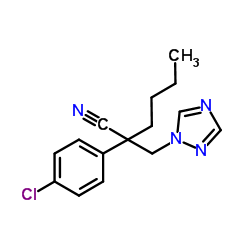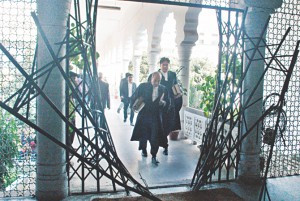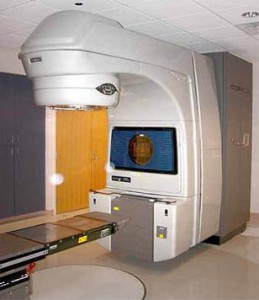A Return to the Hotel California: Out of State Plaintiffs Must Bring Their Causation “Baggage” With Them
By Christopher Strunk, Oakland, Lance Shurtleff, Denver and Tyler Kirsch, Oakland on July 15, 2021
 Out of state plaintiffs flock to California courts to take advantage of its laws, including its more relaxed causation standard for asbestos injuries. However, a recent California appellate decision highlighted the fact a plaintiff may not evade the application of his own state’s causation standard when his asbestos exposure occurred entirely in that state – notwithstanding a California venue.1
Out of state plaintiffs flock to California courts to take advantage of its laws, including its more relaxed causation standard for asbestos injuries. However, a recent California appellate decision highlighted the fact a plaintiff may not evade the application of his own state’s causation standard when his asbestos exposure occurred entirely in that state – notwithstanding a California venue.1
Swanson v. The Marley-Wylain Company held the trial court erred by permitting a causation instruction based on California law, when Michigan’s causation standard properly applied. Swanson involved a Michigan-based plumber who, from 1969 to 1976, was allegedly exposed to asbestos while working on boilers manufactured by a Marley-Waylain (“MW”) subsidiary. He moved to California in 1979, was diagnosed with mesothelioma in 2014, and filed suit in California for his injury. Swanson’s exposure to MW’s product took place entirely in the state of Michigan, and given there was conflict between Michigan’s stronger “but for” standard of proximate cause test and California’s “substantial factor” test, MW asked the trial court to order Michigan’s causation standard applied. Although the trial court denied MW’s motion, the Court of Appeal issued a writ of mandate ordering Michigan’s causation law applied. The case proceeded to trial. Plaintiffs persuaded the court to issue a jury instruction setting forth California’s substantial factor test; the trial court ultimately instructed the jury the plaintiff “may meet the burden of proving exposure to defendant’s product was a substantial factor causing the illness by showing that in reasonable medical probability it was a substantial factor contributing to the plaintiff’s or decedent’s risk of developing cancer.” The jury returned a verdict against MW.
On appeal, MW argued the jury had been improperly instructed under California law, and there was insufficient evidence under Michigan law of a causal link between plaintiff’s exposure and his disease. Although the court found the causation evidence could have been sufficient to support the jury’s verdict under Michigan law, it found that the trial court committed prejudicial error by instructing the jury on California’s “substantial factor” test and reversed the judgment and remanded the matter to the trial court for retrial.
The Swanson decision is important for multiple reasons, particularly its affirmation that the location of a plaintiff’s exposure properly frames the applicable causation standard. Even the fact that plaintiff moved to California in 1979 and was a California resident for 35 years before his diagnosis did not compel a different result. California law requires an issue by issue and defendant by defendant choice of law analysis. When, as here, such analysis mandates the application of out-of-state law, a plaintiff may not bypass that mandate with creatively fashioned jury instructions, or through a court’s prejudicial error by so instructing a jury.
The key takeaway for those defending California cases with plaintiffs whose exposure took place entirely out of state is to evaluate and seek to apply the causation standard of the locus of exposure. Even when a plaintiff is a California resident, the “issue by issue” evaluation process mandates application of the causation standard from the state where the exposure occurred.
________________________________________________________________________

 A California Court of Appeal has rejected a defense challenge that the defendant was assigned too high a percentage of liability (60%), because the defendant did not introduce enough evidence about other parties’ liability. The court also rejected a defense claim that the $25 million noneconomic damage award was excessive, even though it was “well beyond the normal range of awards in similar cases for similar injuries” per a survey of similar verdicts.
A California Court of Appeal has rejected a defense challenge that the defendant was assigned too high a percentage of liability (60%), because the defendant did not introduce enough evidence about other parties’ liability. The court also rejected a defense claim that the $25 million noneconomic damage award was excessive, even though it was “well beyond the normal range of awards in similar cases for similar injuries” per a survey of similar verdicts.


 wrongful death case. Sam Davis worked as an auto mechanic and home remodeler from approximately 1963 to 1979. He performed “one or two” brake jobs per day, and always used Bendix brake linings (for which defendant Honeywell was responsible). These linings contained 50 percent chrysotile asbestos by weight. He was also allegedly exposed to asbestos as a result of his home remodel work.
wrongful death case. Sam Davis worked as an auto mechanic and home remodeler from approximately 1963 to 1979. He performed “one or two” brake jobs per day, and always used Bendix brake linings (for which defendant Honeywell was responsible). These linings contained 50 percent chrysotile asbestos by weight. He was also allegedly exposed to asbestos as a result of his home remodel work.
